Costumes On Screen: How Clothing Has Enhanced Visual Storytelling
“Vain trifles as they seem, clothes have, they say, more important offices than to merely keep us warm. They change our view of the world and the world’s view of us.”
Plucked from Virginia Woolf’s 1928 novel, Orlando: A Biography, this observation states an inherent — albeit overlooked — truth of our daily lives. The clothing we wear is, at the very least, a tool of survival. But more than that, they are often carefully selected to reflect the wearer’s personality, identity, and mood.
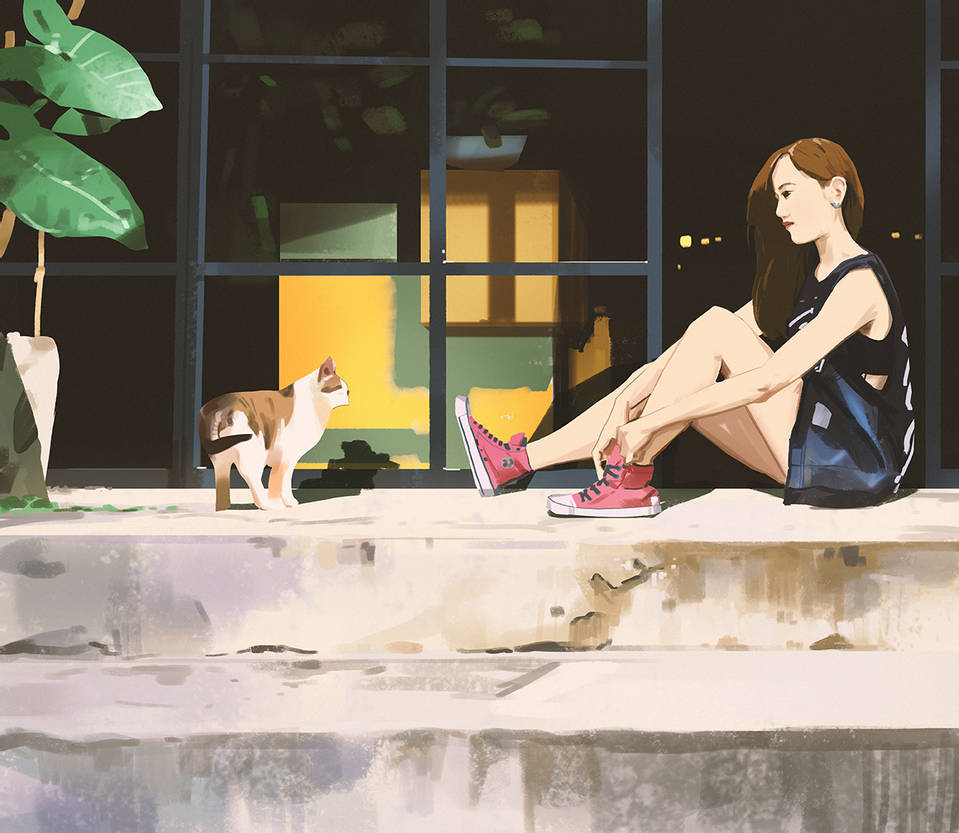
Generally speaking, a story usually only depicts a brief window of a character’s life. Therefore, the storyteller must be able to convince the viewer that those characters exist outside of the time that they are on screen. The creator of a show or a film must depict a degree of realness in their otherwise fictional beings. It is this human interest that keeps viewers invested. Clothing is a significant part of this process.
In many popular stories that have played out on screen, costumes and clothing have formed an integral part of the storytelling process. Television shows, film, music videos, and even video games have all incorporated what are otherwise thought of as daily staples into their characters’ lives. Often, this is done in meaningful ways that help establish the characters, setting, or plot.
As this article will explore, clothing has enhanced visual storytelling in a range of ways. Indeed, the following examples of popular film and television shows demonstrate that costume choices often demand closer attention than they are normally given. The way a storyteller chooses to clothe their fictional beings can have great influence on how that story is interpreted by the viewer. The wordless medium of clothing design is capable of conveying multitudes.
Character Building
In its simplest storytelling form, clothing has been used as a valuable tool for character building. Rather than spend a lengthy portion of the story telling viewers that a character is interested in sport, for example, a storyteller can simply put the character in an outfit to show it. This practice often relies on stereotypes and overused tropes to convey a point.
The Breakfast Club Characters
The 1985 film, The Breakfast Club, demonstrates this use of clothing stereotypes. The John Hughes classic takes place during a single Saturday, and depicts five teenagers from supremely different social circles forced to spend hours together in detention. Each person enters detention dressed in their own unique style; this is supposed to represent a part of who they are. Bender dresses in dishevelled clothing which matches his rough and ‘criminal’ life experience. Andrew is easily identifiable as an athlete from his Nike singlet. Allison’s attire is as unconventional as she is touted to be, while Claire is typified as classically feminine through being dressed in pink. Finally, Brian is dressed in the unremarkable clothing befitting his social status as an unpopular nerd.
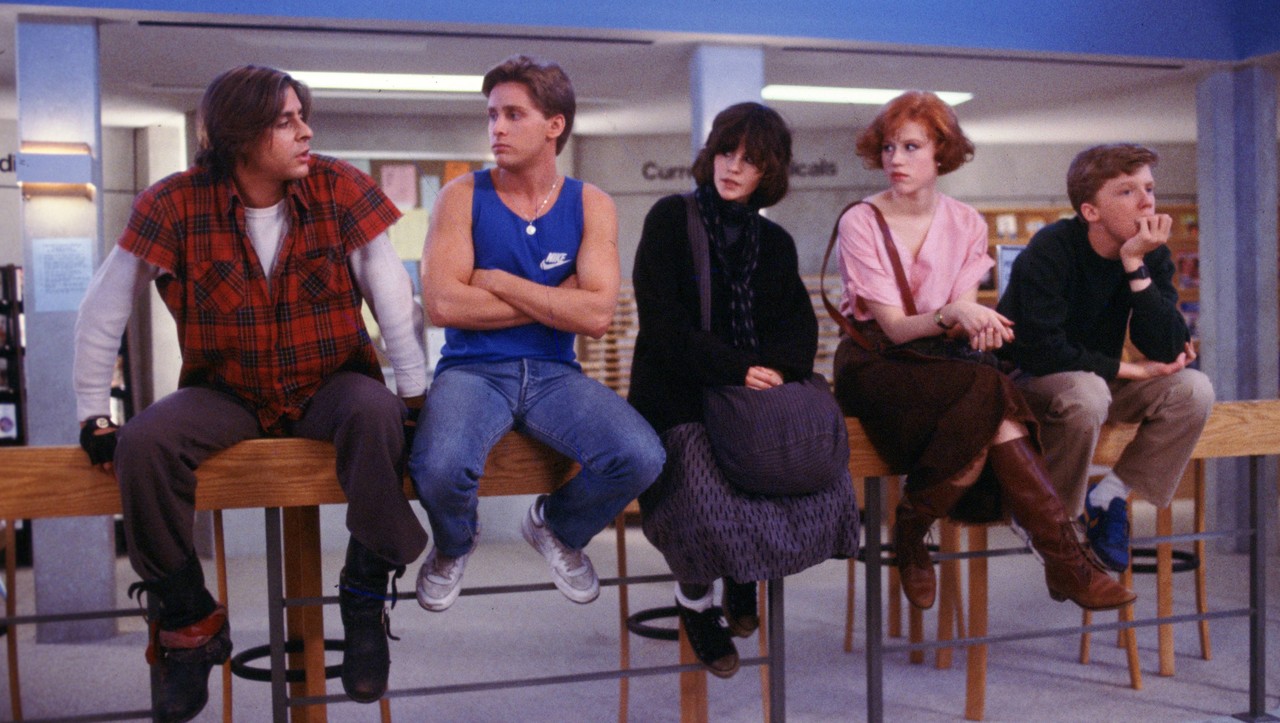
What is also important, though, is that in showing who they are, their clothing also shows how entirely different they are from one another. This perfectly sets the scene for the film’s later conflict. Without needing to address it, the viewer likely already recognises from their individual outfits that these characters are not friends.
Lane Kim, Gilmore Girls
Character building through clothing can also be more sophisticated and meaningful though. One example of this is Lane Kim from the 2000 television series Gilmore Girls. Best friend to the main character, Lane is from a conservative Christian family. Despite the restrictive nature of her upbringing, she finds herself enamoured by an alternative lifestyle. One way in which the audience is continuously reminded that Lane secretly listens to punk rock music that her family would never approve of is through her clothing.
In many scenes, the character is shown wearing music-related apparel. During the third season’s third episode, titled ‘Application Anxiety,’ Lane begins a scene wearing a black shirt bearing the name of the punk rock band Dead Kennedys. She is comfortable in this outfit; instantly lighting up when someone starts a conversation based on the shirt. Despite this comfortability, at the end of the night, Lane is to return home to her family and, thus, removes the shirt. Underneath is a second shirt that reads “Trust God.”
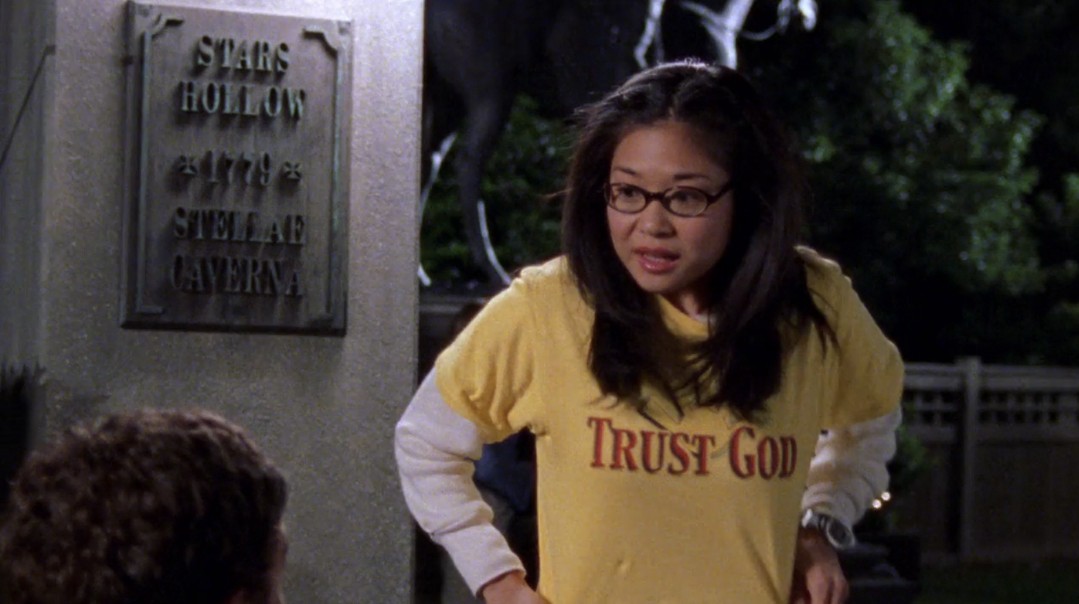
This clothing-oriented detail demonstrates two integral aspects of Lane Kim’s overall identity: the first is that she defines herself in part by her love of music. The music-loving version of herself is the version she wishes to be seen by the public. The second is that, despite this love, she still wants to please her parents by creating the illusion that she lives as they expect her to. This cycle of hidden clothing begins in the show’s Pilot episode, and continues until the eleventh episode of season four. When her so-called double life is discovered by her mother, the duality of Lane’s identity — formerly expressed through clothing — becomes explicit:
“My band had this amazing chance to play this really famous club last night and I didn’t know how to tell you about it. I knew you wouldn’t approve, you wouldn’t approve of me being in the band or the music we were playing…
I just – I want to please you so badly, but I can’t.”
This might be news to Lane’s mother but, to the show’s viewers, this only reaffirms what the character’s clothing changes have consistently demonstrated. Due to the constant and pedantic attention given to Lane’s wardrobe, this character building is overt and seamless. Just as humans do, choosing clothing to reflect the character’s personality is a convenient way to advertise a degree of who they are.
Growth and Change
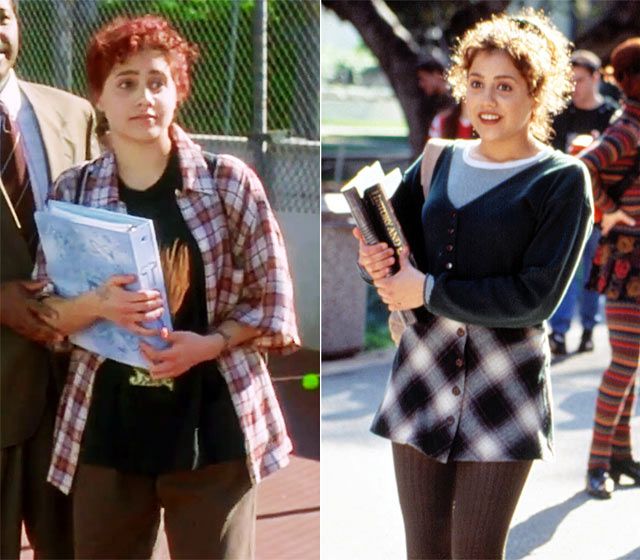
In a similar vein, if clothing can be used to establish who a character is, then a change in their outfits can also be used to signify when a character changes. Films have long used upbeat makeover montages to redesign a character. Usually, this occurs during a turning point of the character’s story. One need only watch Miss Congeniality or Clueless to confirm this.
The Characters of Community
But, using clothing to signify change can also remain unspoken in a way that rewards the faithful and observant viewer. Not dissimilar to The Breakfast Club, the 2009 sitcom Community is built around an ensemble cast that appear to be unlikely friends. However, throughout the duration of six seasons, the sitcom shows just how compatible its characters are despite first appearances. At numerous points throughout the series — and often without any verbal acknowledgement — the characters’ clothing choices change with the characters.
Britta Perry is touted as a beautiful and unapproachable woman; indeed, to the main character Jeff Winger, this is exactly who she is. At one point he remarks that people likely find her “severity” off-putting. Described as having an “infinite supply of leather jackets,” and always seen wearing high-heeled boots around campus, her clothing matches this.
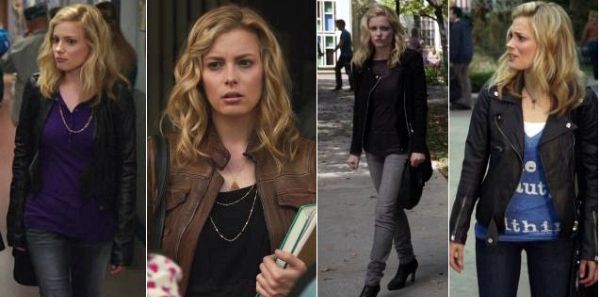
However, throughout the show’s six seasons, she grows more comfortable being her awkward and loving true self. As the characters get to know Britta, she begins dressing in ways that make her appear more approachable. She frequently swaps her heeled boots for sneakers, and opts for lighter-coloured sweaters that soften her appearance.
Annie Edison is the youngest member of the fictional study group, and from the Pilot episode, she overtly states that she struggles with being dismissed due to her comparative youth. She mentions often that she feels as though she is not taken seriously. In season one, episode twenty, titled ‘The Science of Illusion,’ Annie angrily states, “maybe I’m tired of everyone thinking of me as a little girl. Maybe I wanna be in charge of how I’m defined.”
To match this immature characterisation of Annie, her character often wears floral dresses and brightly coloured cardigans. There are plenty of guides that tell women how to dress more ‘maturely’; floral dresses and bright colours are scarcely in them. 1 Therefore, during season five when it was time for Annie’s character to grow up, this was signified by her swapping her dresses for corporate-wear and, most noticeably, pants.
Alison Brie — the actress who played Annie — addressed this change in numerous interviews. During one interview with TV Insider, she discusses how Dan Harmon, the show’s creator, incorporated her clothing changes into the character’s storyline:
“Annie wears pants now [laughs]. That was a big deal in Season 5. She’s still wearing them…Dan was very conscious with my character to start taking her out of the realm of being a little girl.”
Alison Brie 2
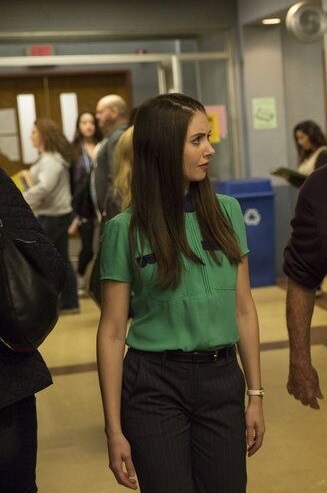
This outfit change coincided with several life developments for the character. This included her decision to study forensic science; a decision that ultimately led her to move away from home for an internship with the F.B.I. For the loyal viewer who has watched from episode one, this change in her outfits is noticeable and it complements her character development well.
Abed Nadir, another protagonist of Community, is different from his friends in that he does not change his style. For the duration of the series, he wears the same style: a graphic t-shirt, jeans, and a jacket of some sort. However, this lack of development also complements his character’s storyline. Abed mentions on numerous occasions that he is happy with who he is as a person: “I’ve got self-esteem falling out of my butt.” Thus, unlike Britta or Annie who felt the need for some change, Abed’s willingness to stay the same is also demonstrated in his attire.
Many of these examples rely upon limiting stereotypes and, thus, their storytelling capabilities are only one-dimensional. However, these creative clothing choices help propel each character’s storyline along. Not only do the wardrobe choices give viewers an idea of who each character is; they also show viewers who each character later becomes.
Contextual Immersion
Outside of individual character storytelling, clothing is a useful tool for setting the scene. This works in the most immediate sense when a scene imitating reality requires basic authenticity. For example, a standard funeral scene is better articulated with a cast dressed in black. Similarly, viewers might not believe it to be winter if characters are comfortably standing in the snow whilst wearing shorts.
Not only this, but clothing is a recognisable way of dating a story. Trends and styles have changed dramatically over the course of hundreds of years. A decade can be instantly recognised purely by looking to the clothing that is worn. This is due to the ever-changing nature of clothing trends and patterns. Thus, when depicting a story set in a time gone by, clothing is an effective way to establish the time period.
Grease and the 1950s
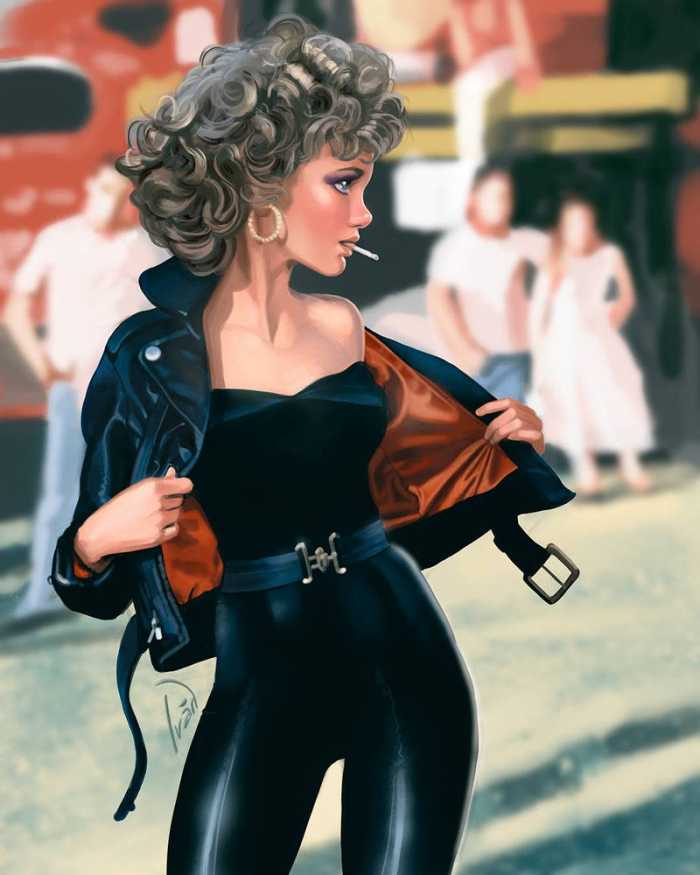
The 1978 film Grease demonstrates this. Set during the 1950s; the film ensures viewers understand the time period by artfully selecting key styles of the 1950s. Sandy Olsson’s style is described as preppy; she frequently wears dresses with a cinched waist and full midi skirts that create a dramatic hourglass silhouette. Her friends are often seen wearing pencil skirts or cropped shirts. These were all common styles worn during the 1950s. 3 By selecting such costumes, it allows viewers to recognise the film’s intended time period. Moreover, this attention to contextual detail also helps viewers to immerse themselves into the story world being depicted.
Many of the characters in Grease belong to the Greaser subculture that became popular in the United States over the late 1950s and early 1960s. The men who were involved in this subculture usually dressed in leather jackets, tight-fitting clothes, and motorcycle boots. 4 Danny Zuko and his friends match this description perfectly. Similarly, Sandy’s makeover outfit — tight leather pants and a leather jacket — is reminiscent of a so-called ‘Greaser girl.’ Through contextualising her makeover in trends of the 1950s, it further helps to reiterate that this is the film’s chosen setting.
Blade Runner
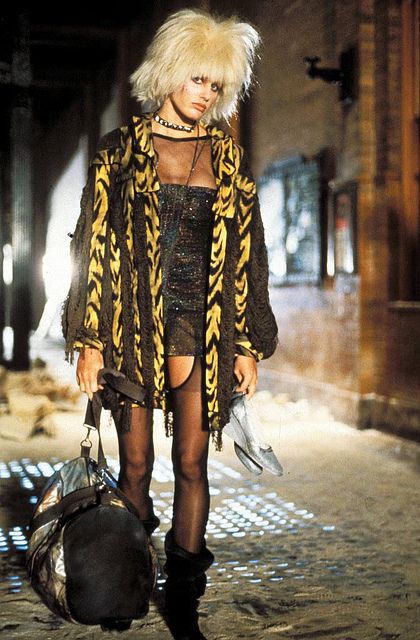
For stories that are not necessarily grounded in absolute realism — such as those in the dystopia or fantasy genres — the costumes chosen often help to demonstrate this move away from reality. The 1982 sci-fi classic film Blade Runner demonstrates this. The film envisions a 2019 version of Earth that has been destroyed by war. For the audience who viewed the film when it was first released, it was set thirty-seven years in the future. Thus, its characters’ attire can be described as futuristic.
The costumes, like that of Pris Stratton, are unconventional. They mimic outfits typical of daily life, like a dress with a coat, but they are a little too dishevelled and eccentric to be considered ‘normal.’ Moreover, the android characters of Blade Runner tend to be dressed less conventionally than the humans. This ties in to earlier ideas of character building.
By dressing the characters in this way, it helps to emphasise that this story is not set in the contemporary world that the viewer lives. It adds to a story world that is supposed to look different from the real world. However, it is close enough to reality to impress the point that this is still a reflection of the darkest parts of humanity.
While clothing details arguably do not make or break a story, they do add a necessary layer of contextual detail. Clothing in real life is heavily dependant upon context. Indeed, clothing is often grouped based upon the context it is intended to be worn in; for example, swimwear is for swimming and coats are for the cold. Incorporating these ideas into the storytelling process ensures that the viewer can understand and immerse themselves in the lives being depicted.
Breaking Social Norms
The impact of a costume not matching its intended context can result in a lack of believability; this might ultimately hinder the viewer’s ability to immerse themselves into the story world. For example, if the characters in the 2011 film adaptation of Jane Eyre all wore jeans and t-shirts, it would change the viewing experience altogether. As this film is set in the 1800s, if the clothing were too modern, no longer would it be a period romance or drama. It might instead be misconstrued as a comedy or parody.
However, sometimes a deliberate decision is made to make a character’s outfit conflict with the context of the story. Though choosing what to wear each day is seen as the result of human agency, often these decisions are conditioned by social norms. 5 Thus, when an outfit breaks such social norms, the wearer can risk looking somehow out of place. Creators can mimic this scenario by choosing contextually inappropriate attire for characters. This might, then, signal that they are out of place.
The Rose Family from Schitt’s Creek
The sitcom Schitt’s Creek exhibits this perfectly. The show follows the Rose family as they lose everything and are forced to move out of their mansion and into a small rural town just to survive. Having grown accustomed to dressing expensively, when the Rose family arrive in the town of Schitt’s Creek they look unusually well dressed. This is especially as plaid and denim seem to be the norm for this town. Put simply, the characters’ attire never really matches the new rural context they are thrust into.
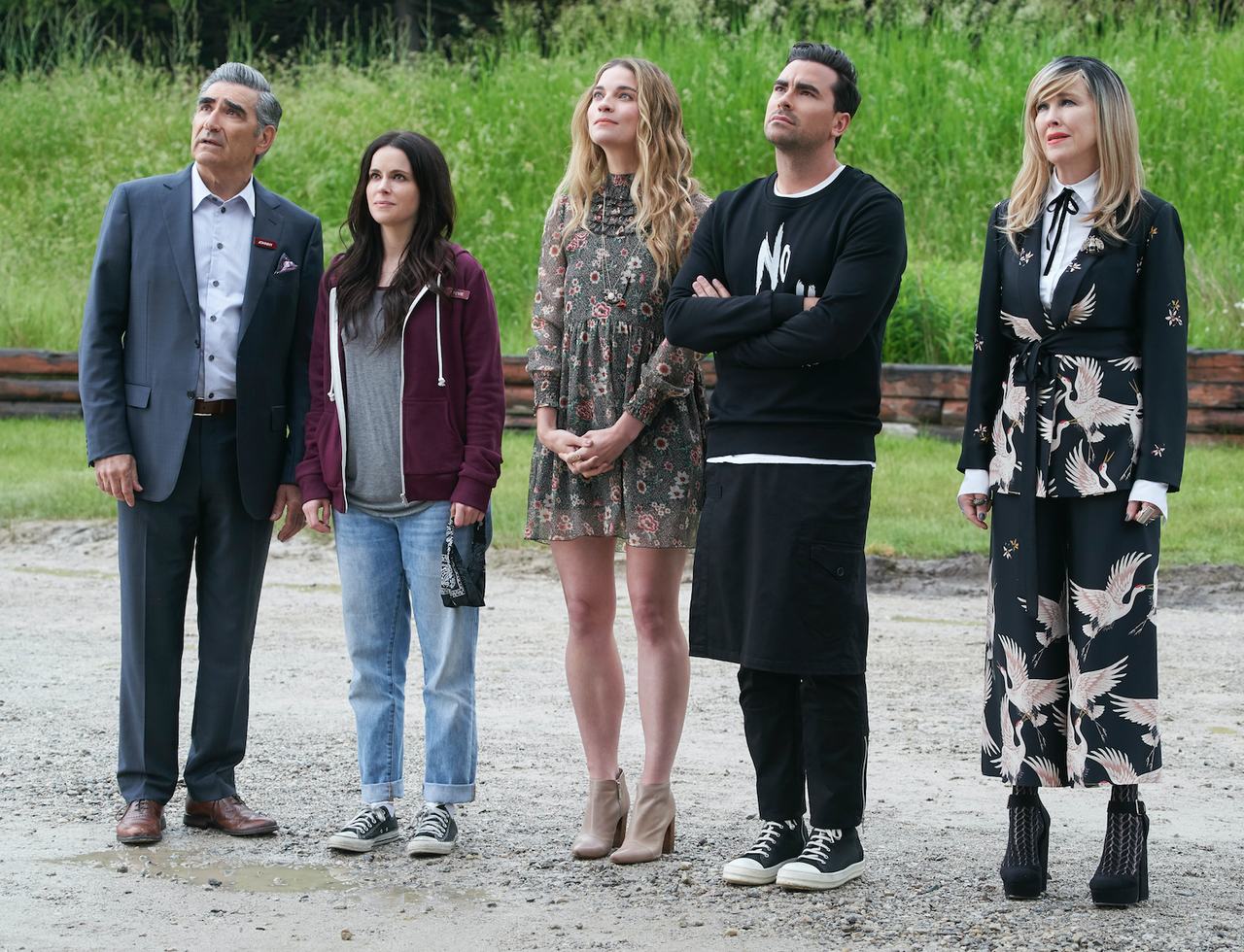
Their choices of clothing do come up in conversation with the new friends they make; the people of Schitt’s Creek notice this oddity. David Rose’s clothes are referred to as “funky” in the show’s first season. Similarly, Alexis Rose is questioned on her choice to dress up while participating in community service. When Johnny Rose wears a white suit to a backyard barbeque, a fellow townie comments upon how unsuited such a pristine outfit is for the occasion.
These seemingly out of place outfits match the feelings of alienation that the Rose family experience. Every member of the family struggles in differing ways with feeling as though they do not belong. Moira Rose expresses this to a friend when she says, “I don’t hate this town, Jocelyn. It’s just not mine.” Similarly, after suffering from a panic attack, her son admits, “I’m pretty sure I’m really lonely here.”
The dissonance created between the outfits they routinely wear and the new environment they live in also demonstrates just how different this new life is for the family. In fact, the opening scene of the entire series shows the family during what viewers can assume began as an average day; they are dressed in suits and gowns for no special occasion. Thus, a quiet rural life is a significant change in scene for them. While this difference is mentioned frequently — it is, indeed, the entire concept of the show — the outfits act as a permanent visual reminder of this fact.
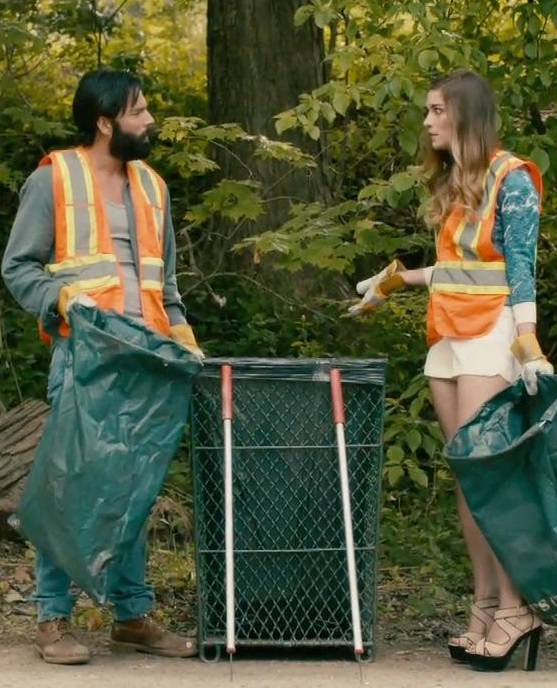
Though the family eventually find some sense of belonging in Schitt’s Creek, their feelings of being out of place are solidified when all but one of the Roses conclude the series by leaving town. The fact that none of them settled into the style norms of the town suggests that they each have a strong sense of identity. These identities remained largely unperturbed by a change in circumstance. But, it also suggests that Schitt’s Creek was only ever a temporary home. Despite how welcoming the town was, as their out of place clothing suggests, it was not necessarily where they belonged. This family are never quite settled; having costumes at odds with the surroundings silently reiterates this.
The show’s creator, Daniel Levy, confirmed the importance of clothing in his storytelling during the documentary Best Wishes, Warmest Regards: A Schitt’s Creek Farewell. 6 He expressed his belief that, aside from actually writing, clothing is one of the most important parts of telling a story. He commented further on this saying that costume choice was crucial to designing his characters:
“Because we, as people, say so much about who we are and what we believe in, and what we want, and what we think of ourselves by the way that we dress.”
For the Rose family, what they want is to escape the town and this is evident in their norm-defying clothing. Though it might not make sense in another story to have costumes so divorced from the context they appear in, it works for Schitt’s Creek as it helps to tell the story. Arguably, without such peculiar wardrobe choices, a significant aspect of the story would be lost.
In on-screen mediums — and in life — clothing is necessary. Aside from the strikingly stylish or unusual outfits, characters’ costumes can simply go unnoticed. But it is important to remember that when telling a story, the clothes a character can be seen wearing were chosen for a reason. Whether they sell the story’s believability, or establish the key points of a character’s identity, clothing is more important than viewers might acknowledge.
Already, we have assigned different stories to the clothes we wear. We assume a person dressed in business wear is headed to work and that such work is likely in a corporate setting. We assume a person dressed in activewear has either just recently exercised or intends to exercise in the near future. A child’s school uniform not only says that the child has been to school; it boasts proudly the specific institution where they are being educated.
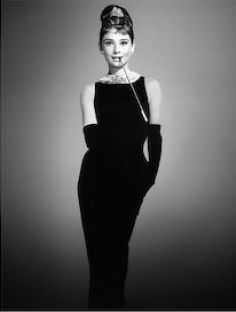
Further still, the clothing we choose for ourselves each day is impacted by factors both in and out of our control. The weather, personal taste, the occasion being attended, or monetary means all contribute to the decision of what to wear. Thus, in the media that mimics our humanity, it is only natural that choosing what a character wears must include the same considerations.
Sometimes viewers only pay attention to the remarkable outfits on screen: Breakfast at Tiffany’s is often remembered due to the black dress worn by Holly Golightly. But, the on-screen characters dressed in jeans and a t-shirt demand close attention too. Chances are, looking to what they wear will help determine who the storyteller intended them to be.
Works Cited
- Lamport I (2011) ‘Dressing Your Age When You Naturally Look Young’, Inside Out Style [webpage], https://insideoutstyleblog.com/2011/09/dressing-your-age-when-you-naturally-look-young.html. ↩
- Schneider M (2015) ‘Community Q&A: Alison Brie on Weathering the Show’s Cancellation and Its Yahoo Rebirth’, TV Insider [webpage], https://www.tvinsider.com/1708/community-alison-brie-annie-edison-interview-season-6/. ↩
- Brewer T (2021) ’50s Fashion for Women (How to get the 1950s Style)’, The Trend Spotter [webpage], https://www.thetrendspotter.net/50s-womens-fashion/. ↩
- The Greaser Subculture (2021) ‘The Greasers Subculture: Background’, The Greaser Subculture [webpage], https://thegreasersubculture.weebly.com/background-information.html. ↩
- Turone R (2018) ‘Do Social Norms Determine What You Wear?’, Huffington Post [webpage], https://www.huffingtonpost.co.uk/rachel-turone/do-social-norms-determine_b_14706224.html ↩
- Segal A (director) (2020), Best Wishes, Warmest Regards: A Schitt’s Creek Farewell [documentary], Netflix. ↩
What do you think? Leave a comment.











Sometimes I wish I could travel to other time periods just to wear the clothes.
You don’t need to time travel to do that.
My high school put on Grease as our spring musical and I had the role of Marty. I LOVED wearing the high waisted skirts with cinch belts, vintage heels, scarves and of course those cat eye glasses!! Unfortunately, I also had to tease and hairspray my curls into oblivion…
Never mind the fashion, why don’t they make movies like these anymore?
Because they don’t make money.
I was obsessed with The Breakfast Club back in the day. This was the era of video rentals, and I must have rented it about a hundred times. I really, really wanted to be MoIIy RingwaId. Thought she was the most gorgeous girl ever!
Looking back now, it all seems a bit naff and silly, but could the same, and worse, not be said about every single teen fiIm? For the genre, it was pretty fab.
‘Was’?!?
I want that re-written a thousand times using the present continuous tense!
I watched it a couple of weeks ago, still remember dialogue, still love the way “Alison” eats her lunch and the way she nicks stuff, and love that she’s at Saturday Detention because she has nothing better to do. (Were they really Molly Ring-dings white knickers?)
I went out with quite a few girls that looked like Alison, still love the look, dark eyes, scruffy clothes etc. Stylish, but NOT grungy. Ally was also good in “War Games” always wanted a lift on the back of her moped!
The dancing bit in “BC” makes me laugh, and also when Brian, toking on a spliff says “Chicks cannot take their smoke.”
I recommend the documentary ‘The September Issue’. It is an outstanding film. I care next to nothing about the fashion industry but that documentary was entirely interesting and involving. Although I can’t help thinking that those at a fashion show might have a better idea of what they’re looking at, being paraded in front of them, if they took their frigging sunglasses off.
The Breakfast Club is a classic, but not without its problems.
Yes. We can see the beauty and esthetic while still understanding and decoding the context behind some of the problematic narratives it presents.
When I first watched The Breakfast Club, I realized that Allison was my spirit animal. As an awkward preteen, her kooky behavior and dark eyeliner were basically a mirror of my own unravelling outsider personality.
Allison is my fave. When you see pictures of Ally Sheedy, it’s amazing how contemporary her outfit looks.
There’s something effortless and chic about the so-called weird girl.
Using different styles of clothing easily establishes which faction/clique/class a character belongs to in a film. Divergent is one example, but The Breakfast Club probably illustrates it the best.
Glad this article made the lineup, and as always, glad I was able to help with the revisions. I especially appreciated your discussions of how costumes show how characters exist outside of screen time, and culture vs. subculture.
Love the teen uniform in Breakfast Club.
The Breakfast Club should be celebrated for the utter brilliance that it was – easily a top 10 movie of mine.
Good read. Should we expect a fictional narrative to be accurate to reality?
I suppose it’s one of those tensions that exist in getting inside a world we don’t always see. There’s a difference – for example – between the way a historical TV series might conflate events, or merge characters and the way that a milieu is represented. The plot might be fictional, but for people, the idea that the characters would move in a world which is accurate in its detail might give weight to it. If you accept that characters in a drama behave as they do partly in reaction to the world they are in, then representing that world accurately, as opposed to inventing the narrative, is important.
To give just one example: Kubrick’s 2001 is fiction, but much of the beauty lies in its accurate depiction of life in outer space.
Some films are works of exuberant fantasy that achieve their effects by taking us far from reality, whether present or historical; others aim to explore life as it is lived, or used to be. If films in the latter category drift away from the way things are (or were), they lose their capacity to say anything about the way the world is, by not being anchored to it. They lose their point.
Watching Gilmore Girls through a 2021 lens as someone who is only a couple of years older than Rory Gilmore is like flicking through photos that reside in various shoeboxes.
So thankful for no social media during my school/university days.
I like the contrast of femininity and masculinity in Greese. The Pink ladies always wore their hot pink jackets, which made them have a streak of pink as their thing. Meanwhile the T-birds would wear leather jackets, white tees and jeans. This was to be masculine and of course, cool.
Claire’s outfit in The Breakfast Club is absolutely timeless and effortlessly chic. The boots, swoon-worthy!
Community’s Abed very much evokes a spirit of être (to be/being) that is not normally seen in America. His clothing choices that you hav shown highlight this. Nice job!
Perhaps it is just me, but I thought the Breakfast Club was a film about how the best thing possible is to conform, because fundamentally we all want to be Molly Ringwald. Pretty horrible message.
The ‘Bender’ character in TBC was ridicious. Judd Nelson was 25 when he made that film, and looked every day of it. Plus, there’s no way in hell such a supposed no-hoper bad guy would have been attending school at all, let alone obedientIy turning up for detention every Saturday morning. He’d have been out dealing drugs and/or getting into fights. And he looked pretty clean and neat for such a tough dude. Still, every teen flick needs its phoney bad guy, I suppose.
if you need your movie characters to make any sort of real-world, logical sense, then you’d have had to have skipped pretty much every movie made for teenagers ever, and pretty much every movie made during the 80’s…and pretty much every movie ever made with Nic Cage in it…
I do agree with the basic sentiment of this comment though. Film and T.V. have made some truly out of touch depictions of teenagers throughout the years. Pretty Little Liars or Gossip Girl certainly come to mind for me.
At their core, at least in my experience, teenagers are awkward. I guess that doesn’t quite work for every story though.
I love everything about Annie Edison.
As do I!
The use of clothing in films is one of the greatest tools in creating a visually interesting environment! Especially when thought is put into color use as well.
Costume generates a lot of perceptions and stereotypes but it is an important element in character building and growth.
The costume designer of Greese went crazy. The right amount of crazy.
The breakfast club is awful. Terrible cliched archetypes that spend the second half of the movie just crying
Judd Nelson is the cringiest character of the 80’s.
Ack… The Breakfast Club.
Claire’s (soft) boots are definitely out of fashion.
As for Brian, only (male) goths and hardcore punks wore biker boots in the 80s. Brian would have worn either 16-hole DMs or what used to be called baseball boots.
Biker boots (buckled up unlike Brian’s) didn’t come into fashion until the 90s, right up to and including The Matrix, so maybe Brian was ahead of his time after all.
Don’t forget the hair – they all had excellent hair.
You’ve mixed up Brian and Bender.
This doesn’t seem to be directly about fashion. More about how social stereotypes which may have arisen from these works on screen.
I think it is certainly worth acknowledging that our perceptions of different clothing is often rooted in stereotypes, and that they are often influenced by on screen styles.
Transport me back to Y2K in Gilmore please.
Nike re-released those blue and yellow trainers Brian wore in Breakfast Club about 10 years ago. I was so pleased I bought two pairs. Both now deceased. I can’t believe I’m admitting to buying evil Nike products, but there you go.
This has left me breathless with its incisive social/fashion commentary. An essential piece. Thank you.
Thank YOU for your kind feedback. 🙂
Rory Gilmore as a proposed style icon!
The Breakfast Club is the perfect source of fashion inspiration for those school days.
Thank you for making a piece where the choice of clothing is not simply dismissed as a superficial concern! Fashion can serve as a powerful non-verbal communicator one’s thoughts, feelings, values, etc. I personally care a lot about expressing myself through particular fashion choices, so it can be a good indicator and/or influencer of my overall mood/well-being.
These surely are reflecting the fashions of the time.
I like Molly Ring-ding, but Ally Sheedy was the one I wanted to share a crisp sandwich with, mmm…
As with any era of clothing fresh eyes offer a different perspective often wondering what the hell we were thinking.
Absolutely, it does. In particular, I often find myself completely baffled by what we were collectively thinking during the early 2000s.
This is why I picked TBC for my analysis. Its clothing differences are overt.
The wardrobe of a person tells a lot about their character, highlighting particular personality traits and emphasizing emotions. This is evidently accomplished via the fit, shape, colours, and details of the garments. Realistic and blunt characters will never wear soft, frilly clothing unless for a comedic contrast or major character development. The same goes for a youthful, imaginative character who will never appear in minimalistic, solid articles. Similar to how real people utilize clothing as an extension of themselves, films exercise the benefits of clothing to show the internal attributes of their characters, consequently making it a critical asset in film creation.
I agree completely, and that was essentially the point I was trying to make here with this article. I like your observations about what a character will never wear, that’s a very good point.
I love the reference point of Virginia Woolf at the beginning, such an incredibly intelligent author.
Great article. Wouldn’t it be great to see a shift in the way women are held to a different standard when it comes to appearance on our screens (or in society for that matter)? How a woman looks often seems to be one of her most important character traits. This was clearly illustrated by the styling of Nicole Kidman in ‘The Undoing’ in which she is highly styled in drop-dead designer outfits in every single scene. This was refreshingly contrasted by the natural styling of Kate Winslet and her supporting actors in ‘Mare of Easttown’ in which the women in the show look their age and their ability as actors alone command our attention. Both were strong performances in very different roles but Winslet’s performance challenged the social norm of female actors being noticed mainly for the way they look or dress.
Thanks for the great read – this indeed reminds us and highlights why Costume Design is such an important role in film and television. It often gets overlooked in more normalised ways, but is still a vital part of visual storytelling.
One series that does really interesting things with its characters’ clothes is The Office. Just about everyone in the series wears ordinary office clothes, but when the characters are interacting with each other (particularly when paired up in a talking-head segment), there will be some detail about their clothes that makes them look great together. For instance, a character with blond hair and blue eyes wearing a dark suit, might be talking to another character nearby with darker hair and eyes who wears a lighter shirt. Or they might coordinate their ties. Or the colors and materials they wear might provide clues to their personality somehow. The effect is subtle, but it’s definitely noticeable. It’s almost as though the characters themselves are doubling as set pieces. I’ve seen multiple adaptations of the series and they all do the same thing.
I enjoyed this article a lot. I like the Lane Kim section especially. Fashion changes not only between the different films and shows, but also throughout the different eras of time which is how characters are so very different depending on when you decide to watch them, time wise. We look back now at Y2K fashion and think, wow, why did we ever dress like that, but it’s kind of a sweet nostalgic feeling at the same time.
Clothes definitely make a man.
And shoes.
Clothing is like your physical make-up. It is what you chose to wear you and choose to reflect you, depending on how inviting your appeal is, you will either attract people good for you or bad for you so dress wisely. Clothing is very giving especially where subtle character development is concerned.